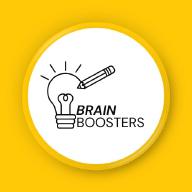What’s covered (at a glance)#
At Key Stage 4 (Years 10–11), mathematics builds on KS3 and develops pupils’ ability to be fluent, reason mathematically, and solve problems across six strands: Number, Algebra, Ratio & Proportion, Geometry & Measures, Probability, and Statistics. These aims are taught through the subject content rather than as add-ons. (GOV.UK)
Typical KS4 content includes:
- Number – fractions/decimals/percentages, ratio, standard form, surds, error bounds, growth/decay and compound measures. (GOV.UK)
- Algebra – manipulating expressions; equations & inequalities (including simultaneous); sequences; graphs (linear, quadratic and others); rearranging formulae. (GOV.UK)
- Ratio & Proportion – direct/inverse proportion, percentage change, best buys, speed–density–pressure. (GOV.UK)
- Geometry & Measures – Pythagoras and trigonometry (including sine/cosine rule), circle theorems, vectors, constructions & loci, transformations, perimeter/area/volume (including spheres, cones, frustums). (GOV.UK)
- Probability – single and combined events, tree diagrams, Venn diagrams, expected outcomes. (GOV.UK)
- Statistics – sampling; representing and interpreting data (histograms, cumulative frequency, box plots, scatter); averages and spread; correlation vs causation. (GOV.UK)
In KS4, “working mathematically” (selecting methods, reasoning, and communicating clearly) is embedded throughout the domains. (GOV.UK)
Common sticky spots#
- Multi-step ratio/percentage problems (reverse percentages, compound change, best-buy reasoning).
- Algebraic fluency (rearranging, factorising, solving quadratics; linking equations ↔ graphs).
- Choosing the right triangle tool (Pythagoras vs SOHCAHTOA vs sine/cosine rule) and setting up diagrams.
- Geometric reasoning & proof (circle theorems, similarity/congruence, vector proofs).
- Data handling with accuracy (selecting the correct representation; interpreting gradients, medians, IQR; understanding bias and sampling).
- Units, bounds & error (significant figures, error intervals, standard form in calculations).
How I support your child#
- Diagnostic → tailored plan: a quick baseline highlights priorities; we map a realistic 4–6 week route with checkpoints.
- Model–guide–independence: concise teaching with worked examples, then guided practice and short retrieval to make methods automatic.
- Concrete → pictorial → abstract where helpful: e.g., visual models for ratio, area reasoning for algebra, right-triangle sketches for trig.
- Reasoning talk: sentence stems for justifications (“because… therefore… so…”) to strengthen exam-style explanations.
- Exam technique & timing: mark-scheme habits, showing clear methods, and splitting time sensibly across calculator and non-calculator papers.
- Parent updates: brief notes after sessions and targeted home tasks to keep momentum between lessons.
